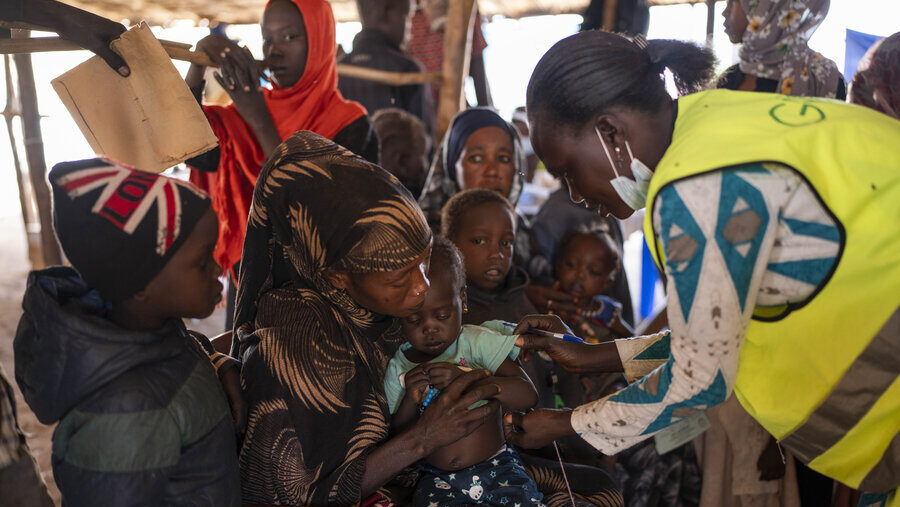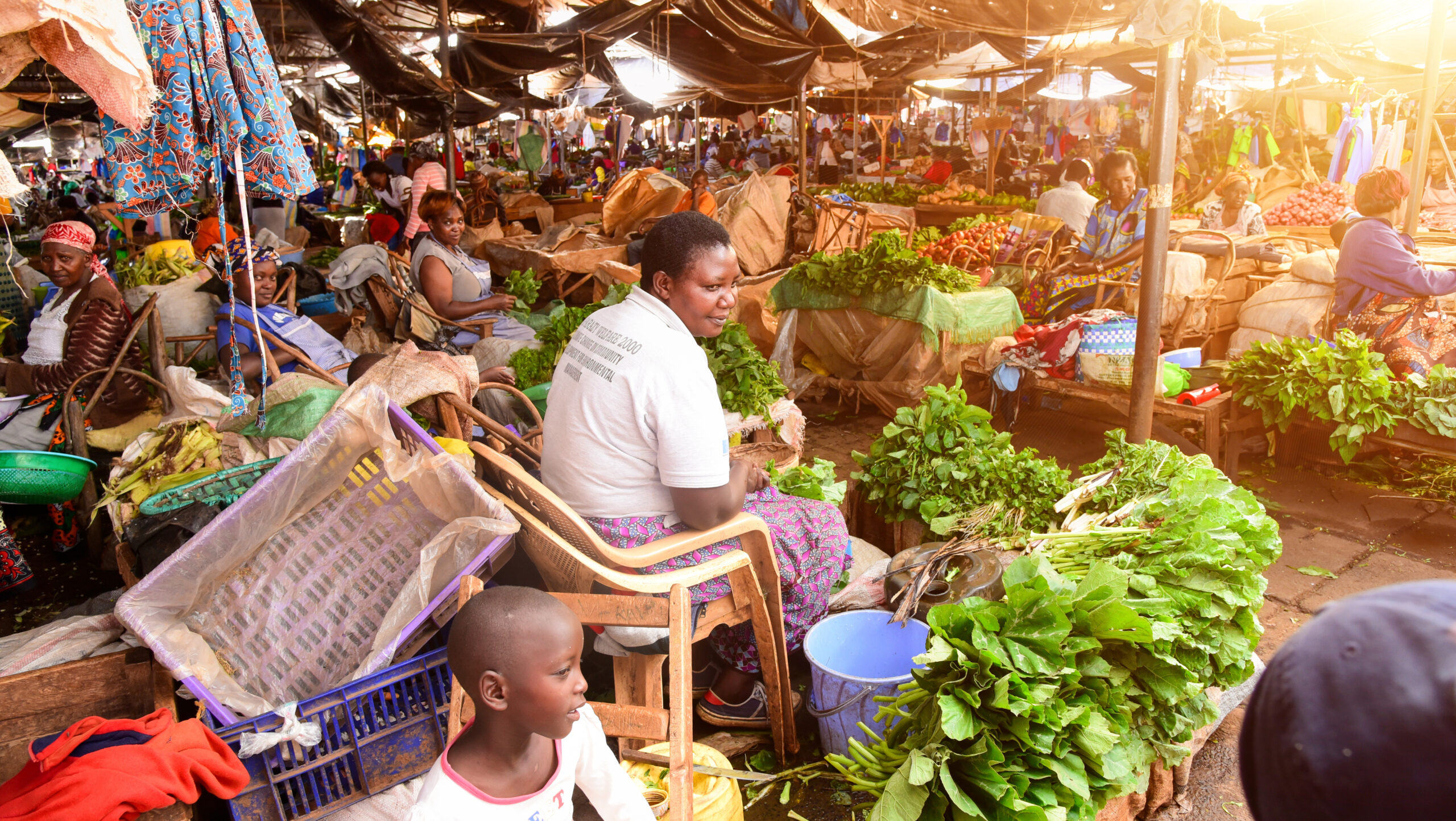Much has been said and written of late about the linkages between conflict and hunger. There is good reason for this: 65% of the world’s acutely food-insecure people live in conflict-affected countries. Typically, two claims are made about the conflict-hunger linkage. First, that conflict breeds hunger. This claim is supported by so much evidence that in 2018 the United Nations adopted Resolution 2417 recognizing the direct impacts of armed conflict on food insecurity and strongly condemning the use of starvation of civilians as a weapon of warfare in conflict situations. The second claim is that hunger contributes to conflict. Support for this claim is either anecdotal or vague; clear causation has yet to be established. Studies identify relationships between drivers of deprivation such as food price shocks, low per capita income, economic stagnation and decline, high-income inequality, and slow growth in per capita food production, on one hand, and violent civil strife, on the other. It is important to explore this linkage further, but hunger does plenty of damage even without an established contributory connection to conflict.
As it is well-established that conflict generates hunger, the pathways from conflict to hunger must run through food systems. But how? How exactly does conflict impact food systems in ways that promote hunger? Through which processes and mechanisms does this happen?
My experience as the UN World Food Programme’s Representative and Country Director in Ethiopia from 2018 to 2021—a period marked by significant conflict-induced disruption in food systems across the country—suggests at least six conflict-to-hunger channels in food systems. These show the complex and diverse disruptive impacts that conflicts have on food systems, from the destruction of infrastructure to the erosion of trust between key actors in food production and distribution. A research agenda focusing on these pathways—all of which lead to food shortages and hunger—can cast light on the systemic disruptions of conflict and their human costs and contribute to ways to mitigate the impacts of these disruptions. Below, I outline the six channels and propose such a research agenda for exploring and addressing these challenging problems.
Six conflict-to-hunger channels
- Conflict abruptly turns self-reliant rural producers into dependent urban consumers. Many wars play out significantly in rural areas, causing large numbers of farmers, herders, and traders to flee from their homes and communities, usually—amid broader patterns of displacement—to the nearest significant settlement, hoping to find safety, shelter, and access to services. Suddenly, small towns that may not even appear on maps must absorb thousands of people. Despite the staggering generosity of local communities, these huge and unexpected influxes of people are never fully accommodated and served. Severe hardships appear almost immediately in these new “urban” locations—as occurred in August 2021 during the 2020-2022 war in northern Ethiopia, when displaced people converged on Chifra in the Afar Region. Hunger becomes prominent, driven by food shortages and surging food prices. Urbanization is a global trend, meaning more and more food is being consumed in urban areas. But this type of sharp conflict-driven expansion of urban food consumption represents a dizzying acceleration of this process, with immediate hunger as its companion, and with the seeds of future hunger sown in the abandoned fields it leaves behind.
- Conflict destroys trust-based relationships that underpin agrifood value chains interactions and food trade. When conflict erupts, everyone has an irrefutable force majeure reason for not following through on established business arrangements. Longstanding bargaining relationships between sellers and buyers are disrupted or upended altogether, undermining the trust on which food transactions are based, and leading to repeated explicit and implicit contract breaches. Conflict also fragments seasonality in food prices. Disruptions in normal yearly price fluctuations blunt a vital incentive for private food storage, destabilizing the complex trust-based arrangements that govern this central dimension of food systems. Local food stocks dry up, open trade dwindles, shortages appear, prices rise. People go hungry.
- Conflict always creates black markets for food—always. Given the shortages created by disrupted relationships and networks in food markets, anyone who can acquire, store, and move food with any kind of predictability makes a lot of money during conflicts. Some can traverse even the tightest of blockades. Not surprisingly, such people are often military leaders or those close to them who may not prioritize humanitarian concerns. Thus important incentives to make decisions that boost food availability are weakened, at best. Shortages persist and intensify. Prices soar. People go hungry.
- Conflict empowers dispersed and anonymous security officials as primary food system decision-makers. There are countless examples. Think of the armed officers on alert at checkpoints near a conflict front line. Take the checkpoint at Serdo in 2021, at the height of the war in northern Ethiopia. Serdo lies about 40 kilometers from Semera, the capital of Afar Region, on the main road northward to Abala at the border with the neighboring Tigray Region. When inspecting the progress of a WFP convoy en route to Abala, I saw for myself that these officers in Serdo were the only meaningful point persons for the convoy leader seeking passage for a column of trucks loaded with food to be given or sold to people caught on the Tigray side of the line. For these officers, only the local commanding officer’s opinion mattered. And for that local commander, facilitating the movement of food across the front line was clearly an unwelcome addition to already fraught and complicated responsibilities. These unforgiving facts on the ground effectively reversed the hard-earned agreement negotiated between WFP and national and regional authorities to allow food to move through the checkpoint. So the food did not move. Shortages persisted. People went hungry.
- Conflict disrupts the “transformation functions” that connect food supply and demand. Along with never-ending food demand comes the need for food transformation—i.e., for food transport, storage, and processing, and for the finance and insurance that lubricate them. Irrespective of its scale or reach, every food system features physical locations and areas where concentrated food transformation is undertaken. Given their strategic value, warring parties invariably fight the hardest over these areas. Think of the one all-asphalt road connecting two major towns in a contested area—a road that food transporters use routinely. Picture the town with the only fuel depot within a 200 km radius and thus the town where scores of mid-size grain millers have situated their operations. Imagine the main town on the long and vulnerable road from the border to the capital—the town with reliable power and internet connectivity and thus home to a regional army command base, but also the town where transporters position their fleets, and where there is ample warehousing capacity. Given these factors essential both for food transformation and military strategic capability, with every outbreak in fighting, transformation stalls. Shortages persist. People go hungry.
- Conflict risks clouding humanitarian decision-making and weakening the humanitarian food system. Despite the significant contributions of humanitarian efforts globally, challenges persist in navigating the complex dynamics of conflict settings. A recent analysis of the politics of humanitarian assistance highlights that the humanitarian system—with food assistance at its core—is not immune to the political pressures and divisions that often accompany conflict. As I describe in my 2022 book, At the Center of the World in Ethiopia, humanitarian efforts are sometimes influenced by these fault lines, leading to delays, mixed signals, and additional complications that affect the delivery of vital assistance. In conflict situations, the usual speed, precision, and coordination of humanitarian responses are harder to achieve, as decisions by local representatives may be influenced or overridden by external pressures. The result is often persistent shortages and unmet needs, leaving many vulnerable people without adequate support.
Conflict-to-hunger channels: A research agenda
These six conflict-to-hunger channels through food systems must be addressed if this deadly relationship is to be weakened or broken—and the suffering triggered by conflicts reduced in scale and intensity. They also point to a potent research agenda—”Breaking the Links Between Conflict and Hunger”—currently being developed by IFPRI and partners that aims to uncover the mechanisms through which conflict undermines food systems, the conditions under which resilience could emerge, and the strategies required to sustain food security under disruption—and thereby weaken or even break the links between conflict and hunger. The six channels imply six research themes featuring several questions that while not necessarily new in isolation, have yet to be examined in a unified manner:
Rural-urban transition and food system resilience
At issue under this theme is the dual role of urban influxes as both stressors and opportunities for food system innovation, and how displaced populations redefine food consumption patterns and resource flows in host communities. Another focus is the impacts of abandoned rural lands and the resulting economic, social, and agricultural consequences. Questions for investigation include:
- How do conflict-driven urbanization patterns reshape food system dependencies, and what are the implications for rebuilding rural food economies post-conflict?
- Can we predict the resilience threshold of small towns inundated with displaced populations, and how do food systems adapt under such stress?
- What latent agricultural or entrepreneurial capacities emerge among displaced rural populations, and how can these be harnessed to strengthen local food systems?
Trust dynamics in food trade
The focus here is on the adaptive mechanisms of trust that allow food trade to persist in conflict zones, even in the absence of enforceable contracts, and the potential for innovative tools such as digital technologies to rebuild these mechanisms post-conflict. This includes examining how disruptions affect informal market structures and private food storage, as well as studying the resilience of local food systems during crises. Questions for investigation include:
- What mechanisms of trust allow food trade to persist in the absence of enforceable contracts, and how do these evolve during and after conflict?
- How does the collapse of trust in food trade affect informal market structures, and what alternative mechanisms emerge to stabilize food access?
- Can digital tools mitigate trust erosion and provide transparency in fragmented food supply chains during conflict?
Black markets and food access
This theme examines the emergence, operation, and governance of black markets for food during conflict, with an emphasis on understanding their dual role in stabilizing food access while perpetuating inequities and shortages. It also explores the economic and social dynamics of black markets and strategies for leveraging their efficiencies while reducing exploitation. Questions for investigation include:
- How do black markets for food co-opt and reshape formal food systems during conflict, and what governance structures sustain or dismantle them?
- To what extent do black markets stabilize hunger versus perpetuate inequity and food shortages in conflict settings?
- Can we identify the tipping points where black market activity transitions from being survival-driven to exploitative, and how can interventions target these shifts?
Security actors as food system gatekeepers
Central to this theme are the implicit rules, power hierarchies, and decision-making processes of security actors in conflict zones. A particular focus should be on how these actors shape food access and distribution, the militarization of food systems, and how humanitarian actors can effectively navigate these dynamics to improve outcomes. Questions for investigation include:
- What implicit rules and motivations govern security actors’ decisions about food movement in conflict zones, and how do these shape access and distribution?
- How does the militarization of food systems in conflict situations affect power dynamics between local and national actors, and what opportunities exist for humanitarian actors to mediate these dynamics?
- Are there historical precedents where security actors facilitated rather than hindered food access during conflicts, and what can we learn from these cases?
Conflict and food system functions
This topic explores conflict-resilient infrastructure and adaptive strategies to sustain critical food system functions, focusing on localized and gender-sensitive solutions. It examines how supply chain disruptions affect labor patterns and gender dynamics, and investigates the feasibility of conflict-adapted infrastructure such as mobile processing units or decentralized transformation hubs. Questions for investigation include:
- What spatial patterns of conflict predict the most disruptive impacts on food transformation functions, and how can systems be reconfigured to anticipate and withstand these impacts?
- Can decentralized transformation hubs (e.g., mobile processing units) create resilience in conflict-affected food systems?
- How do supply chain disruptions in conflict zones impact gender dynamics and labor patterns in food system transformation activities?
Humanitarian decision-making and food systems
This theme investigates the interplay of political predispositions, organizational dynamics, and advanced tools in shaping humanitarian food responses under extreme uncertainty. It also examines how cognitive and organizational preconceptions impede decision-making, and how tools such as predictive analytics can transform humanitarian operations. Questions for investigation include:
- How do political allegiances and predispositions shape resource allocation within humanitarian food systems, and what counterbalances can ensure impartiality?
- What cognitive and organizational partialities impede rapid and effective decision-making in humanitarian food systems during conflicts?
- Can predictive analytics and AI-driven tools transform humanitarian food system operations, especially under extreme uncertainty?
Cross-cutting questions
The research agenda’s cross-cutting questions span four areas:
- Systemic adaptation: What elements of food systems are inherently resilient to conflict, and how can these be amplified to mitigate hunger?
- Feedback loops: How do disruptions in food systems during conflict create cascading effects across economic, social, and political domains, and how can these feedback loops be identified and broken?
- Conflict as a driver of innovation: Are there instances where conflict-driven challenges have led to transformative innovations in food systems, and what conditions made this possible?
- Ethical governance: How can governance structures be designed to ensure ethical and effective food system management in conflict settings, balancing power and accountability?
In every instance, the pathways from conflict to hunger reveal a crucial truth: Food systems are both deeply affected by conflict and central to addressing its impacts. This research agenda points to the need to uncover the myriad complex ways in which conflict disrupts food systems, deepens vulnerabilities, and perpetuates hunger. Answers to these questions will illuminate the mechanisms that drive these dynamics, providing a foundation for interventions that can break these cycles and create food systems capable of withstanding and recovering from conflict’s harshest effects. Considering that—sadly—the number of conflicts is multiplying, this research agenda has very important implications for our world.
Steven Were Omamo is Director of IFPRI’s Development Strategies and Governance Unit and IFPRI Acting Director for Africa. Opinions are the author’s.







